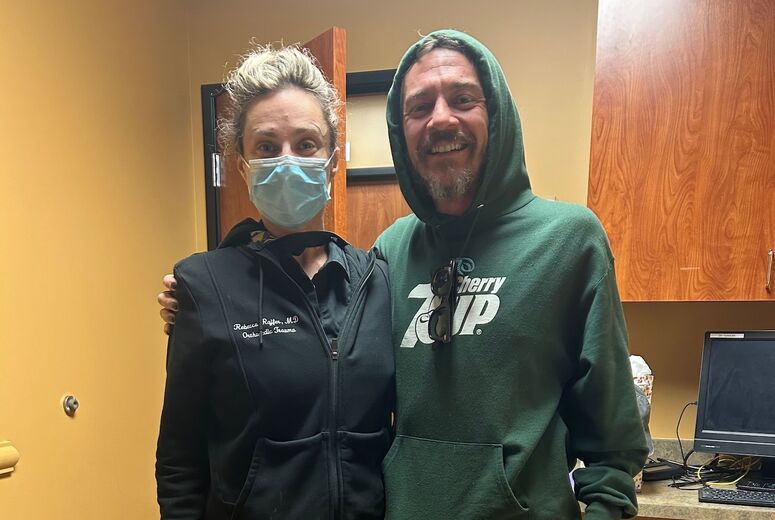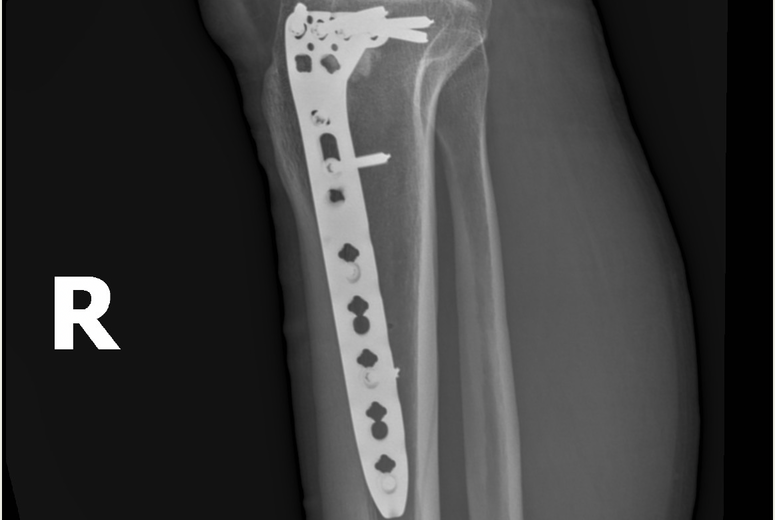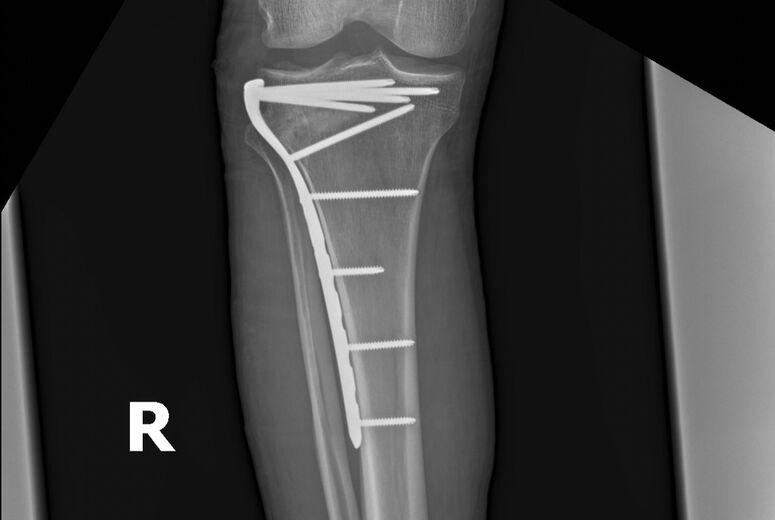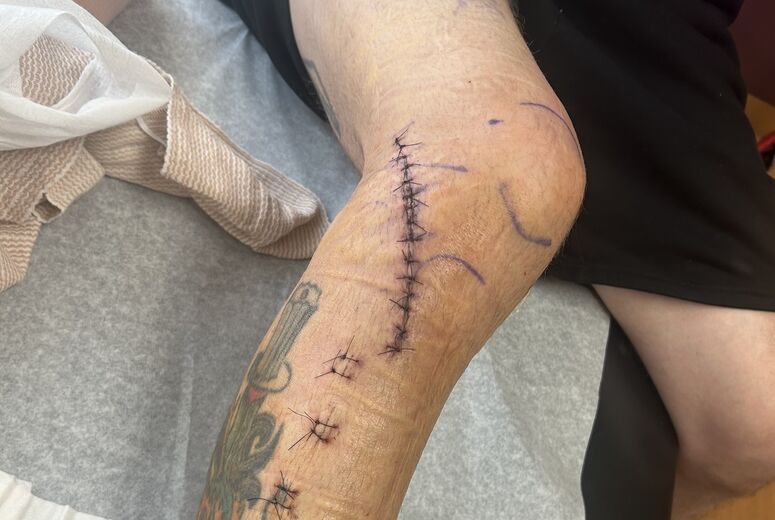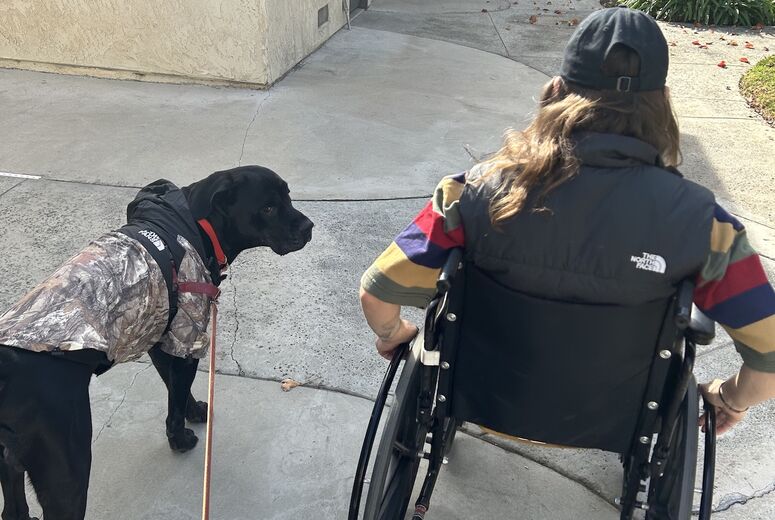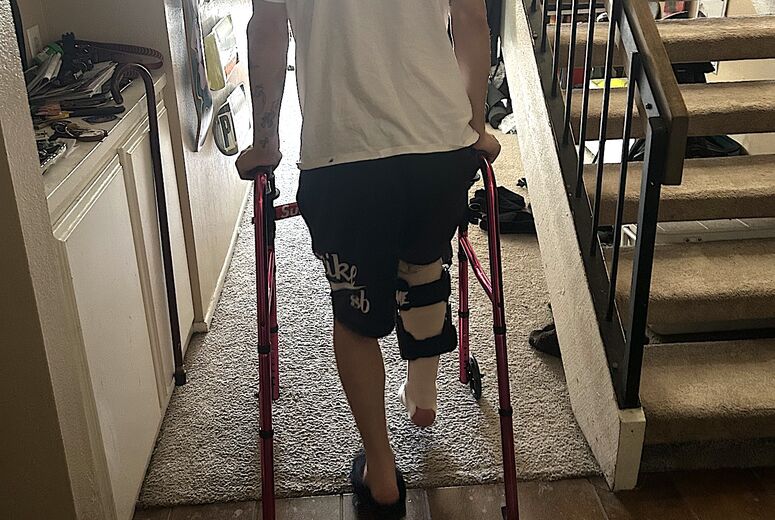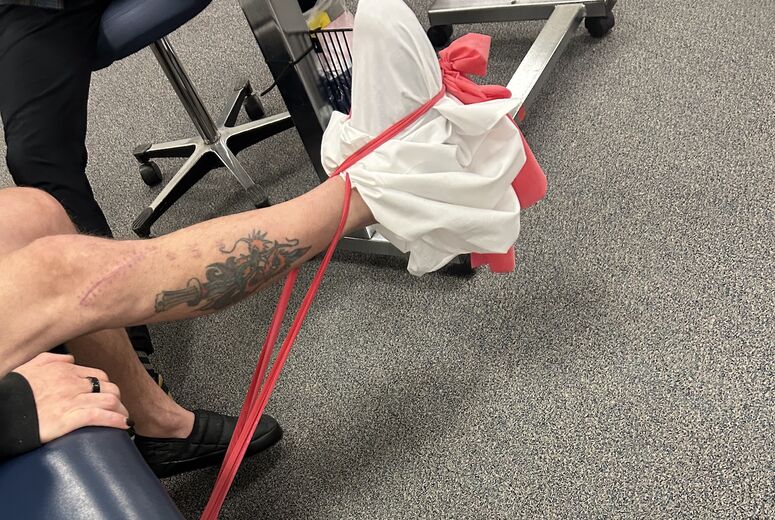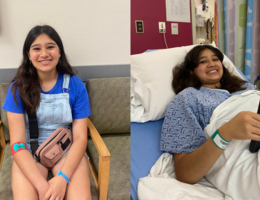
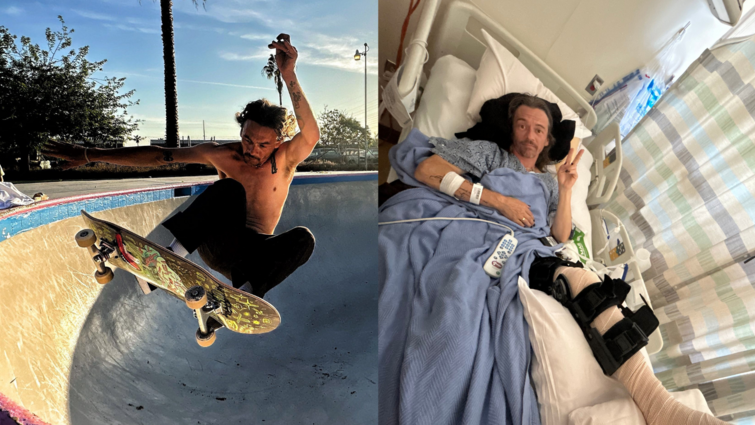
Orthopaedic surgeon repairs split tibia to save a skateboarder's leg
Eric Ylikangas, 36, had been skateboarding for over half his life when a trick he’d done a thousand times sent him into emergency surgery.
What started as a regular Tuesday at the skate park, Ylikangas launched into a trick that should have been second nature to him. This time, grinding down a staircase, Ylikangas didn’t lock into the grind properly, and when he kicked his board away to save himself, he landed on a straight leg.
The impact resulted in the femur driving into the top of his tibia, splitting the lateral tibial plateau vertically.
For the next five months, Ylikangas endured an emotional journey, one that involved the emergency surgical repair of his leg at Loma Linda University Health from orthopaedic surgeon Rebecca Rajfer, MD, and a challenging recovery marked by physical therapy and sobriety.
After the initial injury in November 2024, Ylikangas chose not to go to the hospital due to his lack of health insurance. Instead, he crawled to his car, drove home, and hoped that ice and elevation could ease his pain.
However, 28 hours after the initial injury, his leg was in such bad condition if he tried to stand, his knee buckled sideways. That night, when Ylikangas’ wife came home from work, she convinced him to go to the emergency department.
“I thought I was going to get an icepack and an ace bandage, but they started X-raying my chest, doing EKGs, and putting all these stickies on me,” Ylikangas’ recalled.
“I remembered thinking, ‘I broke my leg, why are you X-raying my back?’ When they told me it was to prepare me for surgery, that’s when it hit me how serious the injury was.”
About eight hours after arriving at the hospital, Ylikangas learned that the damage to his leg could eventually impact the cartilage and soft tissues surrounding the bone, likely leaving him with a permanent postural imbalance.
Because of the potential for long-term damage and the risk of deformity, Ylikangas was taken into surgery the following day.
“Typically, this is a very challenging procedure because we’re dealing with the ends of bones, which are more rounded and sponge-like compared to the hard shaft of the bone,” said Rajfer, the surgeon who performed the operation. “The lateral tibial plateau has a slightly convex shape at the top, and when injured, it often becomes flattened or even concave. Our job is to restore that natural convex shape.”
Since Ylikangas already had such a deep split in the bone, surgeons could insert an instrument into the split to restore its shape without the need for additional drilling. After placing the instrument, a special cement known as a bone void filler was poured into the split to fill where the injury caused a depression in the leg. From there, surgeons secured everything in place with plates and screws to maintain the alignment.
After waking up from the successful surgery, Ylikangas was faced with the reality of his new life and the long road to recovery, including walking again. "The biggest challenge was the mental side of everything," Ylikangas admitted.
"You don't realize how much a serious injury can affect your mind."
Determined to overcome the mental and physical challenges of his injury, Ylikanagas committed to his recovery, strictly following his doctor’s orders and adhering to his physical therapy plan.
He also made lifestyle changes to ensure his recovery was as effective as possible. As a recovering alcoholic several years into sobriety, Ylikanagas was determined not to become dependent on painkillers. Additionally, as a lifelong smoker, he knew he needed to quit in order to support his body’s healing process. To shift his mindset, he replaced the thought, “I want a cigarette,” with a new mantra, “I want to heal.”
However, along with the mental struggles, the journey also came with physical struggles. His muscles were extremely weak, which made regaining strength difficult due to how slow and, at times, painful the process was.
With the support of his wife and guidance from his physical therapist, Ylikangas worked diligently to progress first from a wheelchair to a walker, then to a cane, and eventually to walking on his own.
Now, five months after the accident, he is slowly returning to what he was doing before his accident, including activities like hot yoga, walking his dog, and training to run the Los Angeles Marathon.
Regarding his passion for skateboarding, Ylikangas admits that while the fall made him face his biggest fear, it hasn’t shaken his determination to eventually get back on his board.
For more information, call 909-558-6560 or visit our website here.

